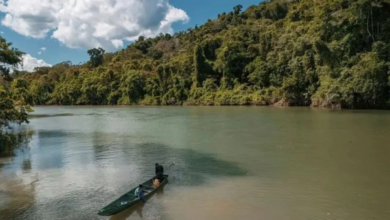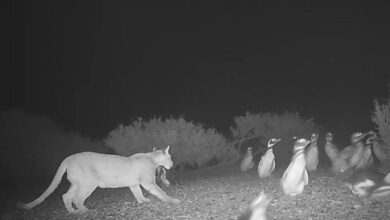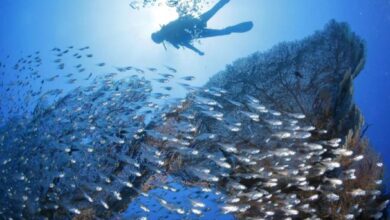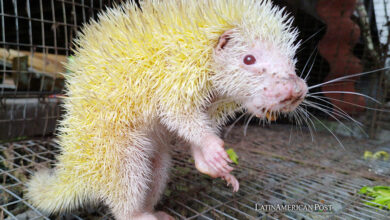Ecuadorian Galápagos’ Penguins and Flightless Cormorants Face Reproduction Decline
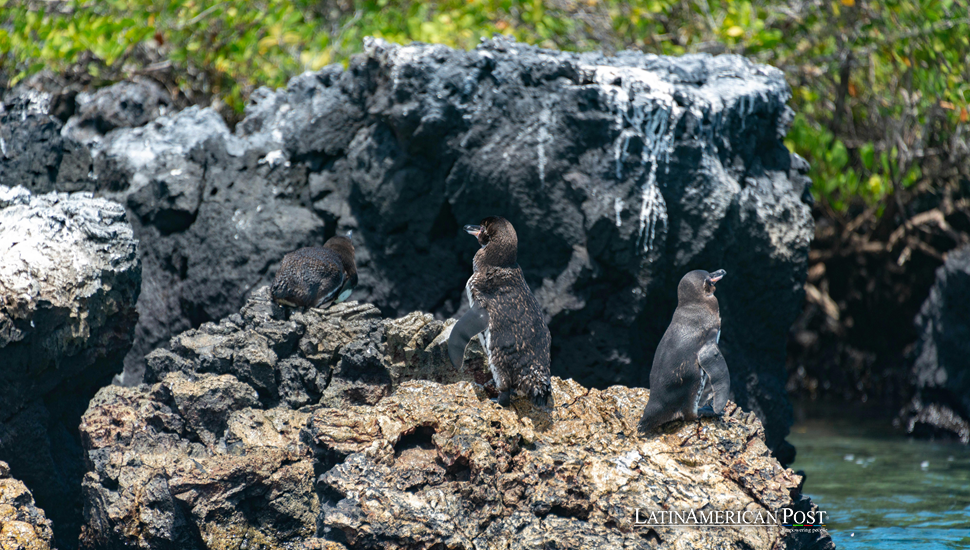
A recent census of Galápagos penguins and flightless cormorants shows a decline in reproduction, likely due to food scarcity. These endangered species are facing growing challenges in the fragile ecosystem of the Galápagos Islands.
A Decline in Penguin and Cormorant Populations
A recent census on the Galápagos Islands revealed troubling signs for two of the archipelago’s most iconic species: the Galápagos penguin and the flightless cormorant. Both species are classified as “threatened” on the International Union for Conservation of Nature’s (IUCN) Red List, and the new data suggests that their reproductive rates are declining.
The census, carried out by the Galápagos National Park (PNG), the Charles Darwin Foundation, and the Galápagos Invasive Species Fund, recorded 413 Galápagos penguins and 762 flightless cormorants across key islands, including Isabela, Fernandina, and the Las Marielas islets. According to the census, 96% of the penguins observed were adults, with only 1% juveniles and the rest unidentifiable. Similar trends were noted among the flightless cormorants, where 86% of the birds counted were adults and just 13% were juveniles.
“These results suggest a decrease in the reproduction of both species, likely due to food scarcity,” the Galápagos National Park stated in its report. The lack of younger birds indicates that these species struggle to maintain healthy breeding populations.
The data highlights an urgent need to address the factors contributing to the decline of penguins and flightless cormorants. These species are unique to the Galápagos and are considered critical species within the ecosystem. Their small population makes them vulnerable, and reduced reproduction could lead to further population drops.
Food Scarcity and Environmental Pressures on Reproduction
The Galápagos archipelago is a delicate ecosystem; even minor disruptions can significantly affect its wildlife. The census highlighted one of the primary issues: the scarcity of food, which appears to be linked to the decline in reproductive success among the Galápagos penguins and flightless cormorants.
Galápagos penguins primarily feed on small fish, such as sardines, which are highly sensitive to changes in ocean temperature and currents. The warmer waters caused by climate events like El Niño reduce the availability of their food sources, leading to increased competition and fewer resources for breeding penguins and cormorants. When food is scarce, adult birds struggle to maintain the energy levels needed for successful reproduction and chick-rearing.
“The nesting areas for these endemic seabirds are susceptible, and disruptions in their food supply can profoundly impact their ability to reproduce,” explained Christian Sevilla, head of the Galápagos National Park’s Island Ecosystem Restoration program. He emphasized the connection between environmental changes and the survival of these species.
Additionally, introducing invasive species has further compounded the challenges faced by the Galápagos wildlife. Predators, such as rats and feral cats, often raid the nests of native birds, including penguins and cormorants, eating eggs and chicks. These pressures and food scarcity create a challenging environment for these species to thrive and recover.
In response to these issues, the Galápagos National Park has increased its monitoring and control efforts to manage invasive species, especially during the critical nesting season. However, addressing the more significant environmental factors, such as ocean temperature changes, requires a more comprehensive and global approach to conservation.
Protecting Fragile Nesting Sites
In the face of these growing threats, conservationists are ramping up efforts to protect the fragile nesting sites of the Galápagos penguins and flightless cormorants. The Galápagos National Park, working alongside scientific organizations like the Charles Darwin Foundation, has implemented measures to stabilize and improve the conditions for these birds to reproduce successfully.
These efforts include habitat restoration, the control of invasive species, and the careful monitoring of breeding colonies. In a recent study, blood samples were taken from 57 birds to test for possible diseases that could further endanger the population. Ensuring the health of the penguins and cormorants is critical, especially as the ecosystem becomes more vulnerable to external pressures.
Sevilla highlighted the importance of ongoing research and active intervention. “We are closely monitoring areas where these birds live to check for the presence of avian influenza. This is part of a broader strategy to reduce anthropogenic pressures on their habitat and ecology,” he said.
In addition to these scientific efforts, the Galápagos National Park has increased surveillance of critical nesting areas to protect them from human interference. As tourism grows in the Galápagos, managing the balance between conservation and human activity has become increasingly important. Protecting the nesting grounds from disturbances ensures that these species have the best chance to breed and raise their young without further stress.
The Galápagos National Park is also exploring options to support these species through artificial breeding programs and new safe nesting habitats to promote long-term survival. These initiatives are seen as vital steps in reversing the current downward trend in reproduction.
The Global Importance of Galápagos Biodiversity
The Galápagos Islands, often called a living laboratory, hold a unique place in the world’s natural history. Their rich biodiversity and isolated ecosystem have made them an unparalleled environment for studying evolution and species adaptation. Charles Darwin’s observations during his visit to the islands in the 19th century laid the foundation for his theory of natural selection.
The Galápagos inspire researchers and conservationists today, and their protection is globally significant. The archipelago, declared a UNESCO World Heritage Site in 1978, is home to over 7,000 endemic and native species, many of which are found nowhere else on Earth. Among these are the Galápagos penguin (Spheniscus mendiculus) and the flightless cormorant (Phalacrocorax harrisi), crucial to the region’s ecosystem.
The Galápagos penguin, the only species to live and nest north of the equator, is one of the smallest penguins in the world, standing at an average of 35 centimeters tall. Its adaptation to the islands’ tropical climate is a testament to the remarkable evolutionary processes at work in the Galápagos. Meanwhile, the flightless cormorant is the only cormorant species to have lost the ability to fly, instead developing exceptional diving skills that allow it to hunt for fish underwater.
Both species are considered indicators of the health of the Galápagos ecosystem. Their decline in reproduction threatens their own survival and warns of broader environmental changes that could affect the entire archipelago. If the unique biodiversity of the Galápagos is to be preserved, it is essential that the global community recognizes the significance of these species and supports ongoing conservation efforts.
Conservation in the Galápagos is about protecting individual species and maintaining the delicate balance of the entire ecosystem. The Galápagos penguin and flightless cormorant play critical roles in the food chain, and their decline could have cascading effects on other species that depend on the same resources. Protecting these birds is, therefore, integral to safeguarding the future of one of the world’s most important natural environments.
The results of the recent census of Galápagos penguins and flightless cormorants are a stark reminder of the challenges facing these unique species. With reproduction rates falling and food scarcity becoming an ever-present threat, immediate action is required to protect the fragile ecosystem of the Galápagos.
Conservation efforts are already underway, but there is a need for increased support and global awareness. Protecting these species is not just about preserving the Galápagos but about recognizing the importance of biodiversity in maintaining the health of our planet’s ecosystems.
Also read: Chilean Loa Frogs Escape Extinction and Begin Their Journey Home
As one of the world’s most famous natural laboratories, the Galápagos Islands have long been a symbol of the wonders of evolution. Ensuring the survival of species like the Galápagos penguin and flightless cormorant is vital for the island’s future and the continued study and understanding of life on Earth.

